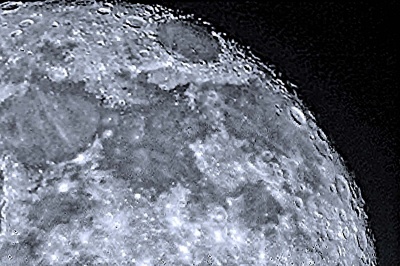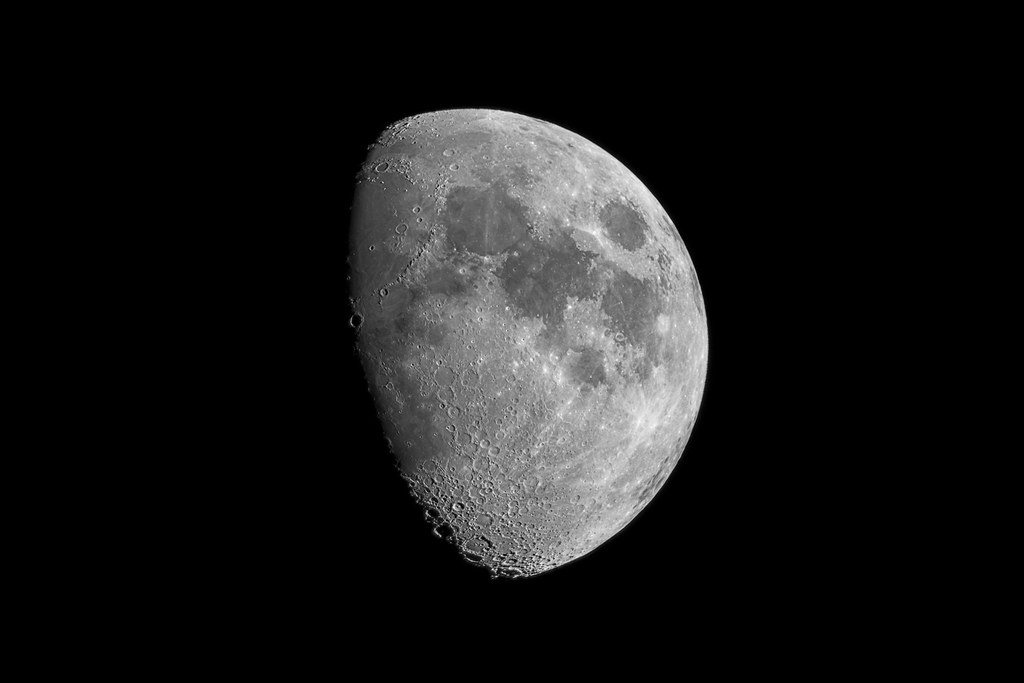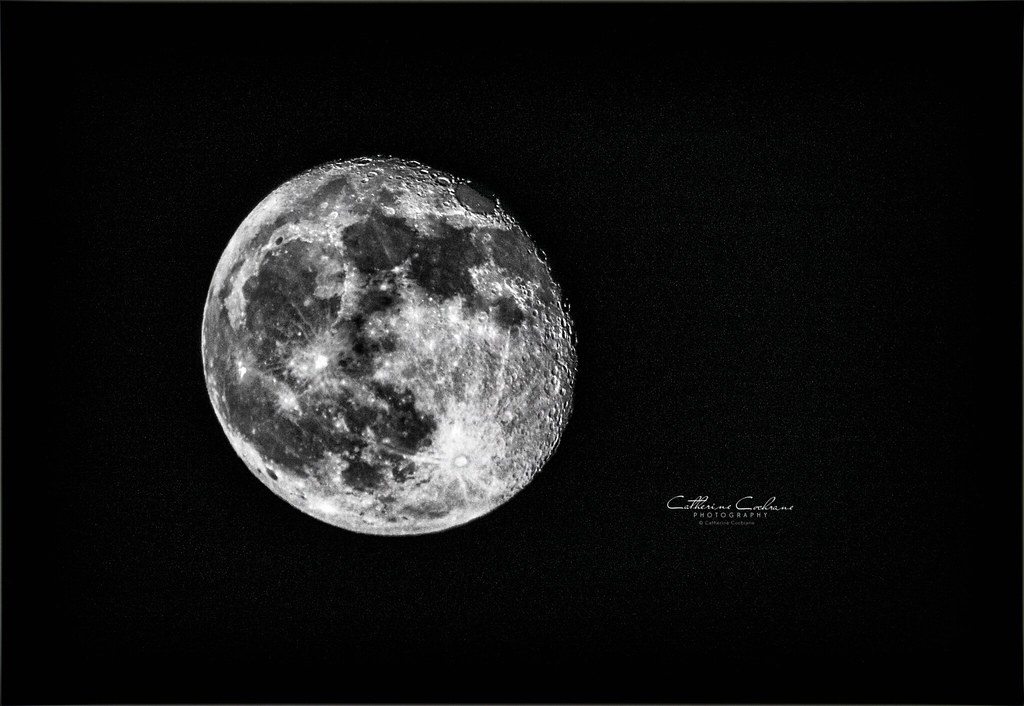You are using an out of date browser. It may not display this or other websites correctly.
You should upgrade or use an alternative browser.
You should upgrade or use an alternative browser.
moon picture
- Thread starter holty
- Start date
- Messages
- 7,990
- Name
- Bazza
- Edit My Images
- Yes
How close do you want to get for the shot first of all, I took this with a 2600mm lens like this one. you need a good firm tripod as well to keep things steady. Slightest movement is amplified many times over at this mm range
https://www.ebay.co.uk/itm/Bower-650-1300mm-Lens-w-2x-Teleconverter-2600mm-for-Canon-EOS-DSLR-Camera/201389714612?_trkparms=aid=555017&algo=PL.CASSINI&ao=1&asc=55148&meid=c28b9da155a343f7ae8aa503ee5ca6c4&pid=100505&rk=1&rkt=1&&itm=201389714612&_trksid=p2045573.c100505.m3226

Ok you will come across these problems
first of all you need a clear cold night so no haze around the moon
everything has to be done manually on camera and lens
setting up on the moons path and waiting for it to come into frame
finally getting a shot of the rim of the moon in focus, full on will just look flat
Then the craters shadows should show up
it ain't easy and you may freeze trying it
finally tweek with an editing suite
good luck in the attempt
https://www.ebay.co.uk/itm/Bower-650-1300mm-Lens-w-2x-Teleconverter-2600mm-for-Canon-EOS-DSLR-Camera/201389714612?_trkparms=aid=555017&algo=PL.CASSINI&ao=1&asc=55148&meid=c28b9da155a343f7ae8aa503ee5ca6c4&pid=100505&rk=1&rkt=1&&itm=201389714612&_trksid=p2045573.c100505.m3226

Ok you will come across these problems
first of all you need a clear cold night so no haze around the moon
everything has to be done manually on camera and lens
setting up on the moons path and waiting for it to come into frame
finally getting a shot of the rim of the moon in focus, full on will just look flat
Then the craters shadows should show up
it ain't easy and you may freeze trying it
finally tweek with an editing suite
good luck in the attempt
Last edited:
- Messages
- 4,686
- Name
- Jan
- Edit My Images
- No
The short answer is don't shoot at full Moon. To get the detail as in Bazza's shot you need side lighting. It's the same as terrestrial landscape. Midday = sun high = short/no shadows = no depth, equivalent to full Moon. Early or late in the day = sun low = long shadows = great depth, equivalent to partial Moon phases. Bazza's said just about everything else.
- Messages
- 4,686
- Name
- Jan
- Edit My Images
- No
im just looking to get the most of the moon in the frame
Then you don't need the sort of extreme focal length Bazza used but you do need something reasonably long or you'll just get a little white dot. Apart from that everything else has been mentioned. The Moon is bright so high isos/low shutter speeds aren't needed. Autofocus works fine too.
- Messages
- 7,990
- Name
- Bazza
- Edit My Images
- Yes
I did forget to mention
You will also need a remote shutter release, either wired or wireless. Working at these distances even the a shutter slap, let alone pressing shutter release button, can jog the camera enough to blur the photo. if you try and get a photo of the whole moon in shot you will be disappointed as most of the moon surface will be flat. Your camera on a steady heavy tripod will help and reallyI think necessary. I used my manfrotto 055XPROB with a 322RC2 manfrotto head.
Don't try taking a photo if there is the slightest bit of wind either. And a torch is hand to have nearby as well
Would I attempt it again even if I still had the lens? no. Doing it once was bad enough
You will also need a remote shutter release, either wired or wireless. Working at these distances even the a shutter slap, let alone pressing shutter release button, can jog the camera enough to blur the photo. if you try and get a photo of the whole moon in shot you will be disappointed as most of the moon surface will be flat. Your camera on a steady heavy tripod will help and reallyI think necessary. I used my manfrotto 055XPROB with a 322RC2 manfrotto head.
Don't try taking a photo if there is the slightest bit of wind either. And a torch is hand to have nearby as well
Would I attempt it again even if I still had the lens? no. Doing it once was bad enough
Last edited:
- Messages
- 996
- Name
- peter
- Edit My Images
- Yes
I managed this as my best moon picture yet the other day.
The worrying thing for me was I did it handheld
Really looking forward to trying this setup on my tripod
 500_1481 by peter staddon, on Flickr
500_1481 by peter staddon, on Flickr
The worrying thing for me was I did it handheld
Really looking forward to trying this setup on my tripod
 500_1481 by peter staddon, on Flickr
500_1481 by peter staddon, on Flickr- Messages
- 1,473
- Name
- Paul
- Edit My Images
- Yes
I managed this as my best moon picture yet the other day.
The worrying thing for me was I did it handheld
Really looking forward to trying this setup on my tripod
500_1481 by peter staddon, on Flickr
that is some shot hand held, must be a cracking VR system on the lens.
- Messages
- 11,513
- Name
- Stewart
- Edit My Images
- Yes
There seems to be a lot of over-complication and over-thinking in this thread.
The moon is a bright subject. It's in bright sunlight. It's just like taking a photo of a terrestrial subject in bright sunlight. You don't need a long shutter speed, you don't need a high ISO, you don't need a tripod, you don't need a remote release, you don't need VR, you don't need to focus manually, you don't need mirror lock-up. (Unless you're using a 2600mm lens like @realspeed !)
The moon is a bright subject. It's in bright sunlight. It's just like taking a photo of a terrestrial subject in bright sunlight. You don't need a long shutter speed, you don't need a high ISO, you don't need a tripod, you don't need a remote release, you don't need VR, you don't need to focus manually, you don't need mirror lock-up. (Unless you're using a 2600mm lens like @realspeed !)
Last edited:
- Messages
- 541
- Name
- Geoff
- Edit My Images
- No
2 mins in the back garden. Then in for a cuppa and processing. I have to agree with Stewart points above, the more important factors are conditions, the weather at both low and high altitude.
When shooting the moon, try to shoot it at the end of the1st quarter beginning of the second and again the end of the third and beginning of the 4th as this reveals the terminator line and is far more interesting to look at; the sunlight will create shadows on the crater walls etc a full moon is pretty flat and boring by comparison presenting just a flat disc of light.
You may also want to try to shoot after a storm or high winds, typically this will give you much cleaner air to shoot through, along side this you may find shooting the moon before sunrise yields better results as the air and atmosphere has cooled down and any air pollution has had time to settle lower to the ground.
The Moon by Geoff Moore, on Flickr

When shooting the moon, try to shoot it at the end of the1st quarter beginning of the second and again the end of the third and beginning of the 4th as this reveals the terminator line and is far more interesting to look at; the sunlight will create shadows on the crater walls etc a full moon is pretty flat and boring by comparison presenting just a flat disc of light.
You may also want to try to shoot after a storm or high winds, typically this will give you much cleaner air to shoot through, along side this you may find shooting the moon before sunrise yields better results as the air and atmosphere has cooled down and any air pollution has had time to settle lower to the ground.
The Moon by Geoff Moore, on Flickr

Last edited:
- Messages
- 526
- Edit My Images
- No
- Messages
- 1,465
- Name
- Cathy
- Edit My Images
- Yes
This was my attempt hand held using my Sigma 150-600mm no idea how to process it properly but just eye balled it until I liked it. I thought I had lots of stars but think its noise lol.
 Full Moon... by Catherine Cochrane, on Flickr
Full Moon... by Catherine Cochrane, on Flickr
 Full Moon... by Catherine Cochrane, on Flickr
Full Moon... by Catherine Cochrane, on Flickr

 2018-10-30_10-09-44
2018-10-30_10-09-44 1
1